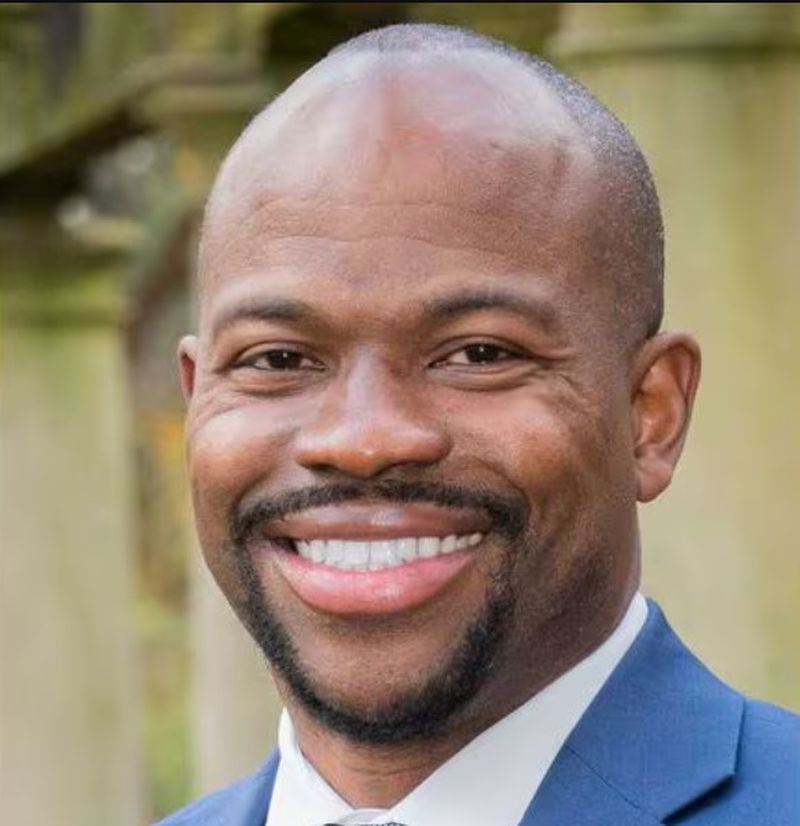President of Georgia State, Brian Blake, and Georgia Region president at Truist, Katie Saez, share their thoughts on why it's important to reimagine Downtown Atlanta.
The following opinion editorial was written by Brian Blake, president of Georgia State and Katie Saez, Georgia Region president at Trust in the Atlanta Journal Constitution on May 18, 2024.
Atlanta is one of the fastest-growing regions in the United States, and the heart of our capital city — Downtown Atlanta — must be a leader in our region’s success. Now is the time to seize the moment and commit to a trajectory that will lead to a safer, more vibrant and welcoming downtown. If we delay action? We risk facing far more difficult challenges in years to come.
Atlanta is at a pivotal moment as we gear up to host major sporting events and undergo large-scale redevelopment initiatives. Upcoming events such as the College Football Playoff National Championship in 2025 and eight matches of the FIFA World Cup 2026 will draw hundreds of thousands of new visitors downtown, turning the kind of global attention to the core of our city we haven’t seen since the 1996 Olympic Games.
Downtown Atlanta serves as the gateway to the metro region for 48.5 million annual visitors. We absolutely must offer a safe, energetic downtown experience that showcases Atlanta at its best. Downtown experiences, positive or negative, shape a visitor’s perception of the entire region.

Credit: Daniel Meigs
Katie Saez

Credit: Provided
Brian Blake
Since the pandemic, Downtown Atlanta has suffered from serious public safety challenges, issues with public transportation, growing concerns about homelessness and fewer workers using office spaces — all factors that lead to a less vibrant downtown area. Yet we are seeing welcome changes: More investment in infrastructure and green space, thoughtful ideas to enhance safety and an uptick in the number of workers returning to the office. Just last month, we learned the Stitch project was awarded its first round of federal funding — a whopping $157 million — to reconnect downtown across the 75/85 Connector.
Other ambitious revitalization projects are already in motion, poised to transform downtown into a livable epicenter of activity. Projects such as Centennial Yards, a $5 billion effort to repurpose 50 acres of underused property into a thriving mixed-use community, just announced its next phase will come online before summer 2026. And “The Center,” the next iteration of the CNN Center, is seeking new office and retail tenants downtown.
Others are breathing new life into historic buildings in South Downtown, converting the 40-story office tower at 2 Peachtree Street into residences and developing the Summerhill mixed-use project anchored by Georgia State University. Activities such as these underscore a commitment to creating diverse, vibrant spaces for residents, students, businesses and visitors alike.
Success doesn’t happen by accident. It comes when strategic planning and purposeful collaboration lead to action.
With a goal of elevating the reputation and allure of Downtown Atlanta, the Metro Atlanta Chamber has rallied with partners on a new project reimagining the Downtown Atlanta neighborhood. The group has invested months listening to diverse voices and defining a common vision, engaging more than 200 stakeholders from various sectors — residents, businesses, developers, government, and academics — to raise the level of focus on improving the downtown experience for all.
We must also look at best practices from other cities — and our communities right here in metro Atlanta — to drive and prioritize improvement plans. Midtown Alliance tells us that the number of residential units in the Midtown area has exploded since 2000. At that time, there were about 5,000 residences; today that number tops 25,000. Property values at The Battery Atlanta have risen from $5 million in 2014 to $736 million in 2022 and generated more than $55 million in sales tax revenue since 2018. These districts are widely perceived as safe, desirable places to live, work and visit.
Tangible progress is underway downtown. In addition to the projects already mentioned that stem from private, federal and philanthropic sources, the city of Atlanta is making major investments in downtown streets and sidewalk infrastructure. Solutions to help homeless individuals have begun, including repurposing the Atlanta Medical Center as temporary housing. The state of Georgia is making a $400 million investment in new legislative buildings and renovations to the Capitol — a testament to our collective dedication to elevating the heart of our city. And the Georgia World Congress Center has announced a $1 billion master plan that would activate and redevelop more than 20 acres of surface parking lots in the heart of Atlanta.
It’s time to commit to continued action. By investing in infrastructure, fostering economic growth and prioritizing community engagement, we will create a thriving downtown destination that is not only prosperous but also safe, welcoming and livable for all. A thriving downtown means more jobs and opportunities, more students and residents living in the neighborhood, and a vibrant entertainment and dining scene, strengthening the original heart of our region. This reimagining benefits and supports our greater Atlanta area.
We want all university students to be and feel safe. We want soccer fans to return home in 2026 raving about what a terrific place they visited. We want more people to make a happy home in Downtown Atlanta.
Big players are at the table investing in infrastructure, historic renovation, green spaces and safety — but they can’t do it alone.
Brian Blake is president of Georgia State University, Katie Saez is the Georgia Region president at Truist. Readers can sign up for updates and share their ideas on the Metro Atlanta Chamber’s Downtown Atlanta project at www.metroatlantachamber.com/downtown-atl.
Read the article on AJC’s website here.